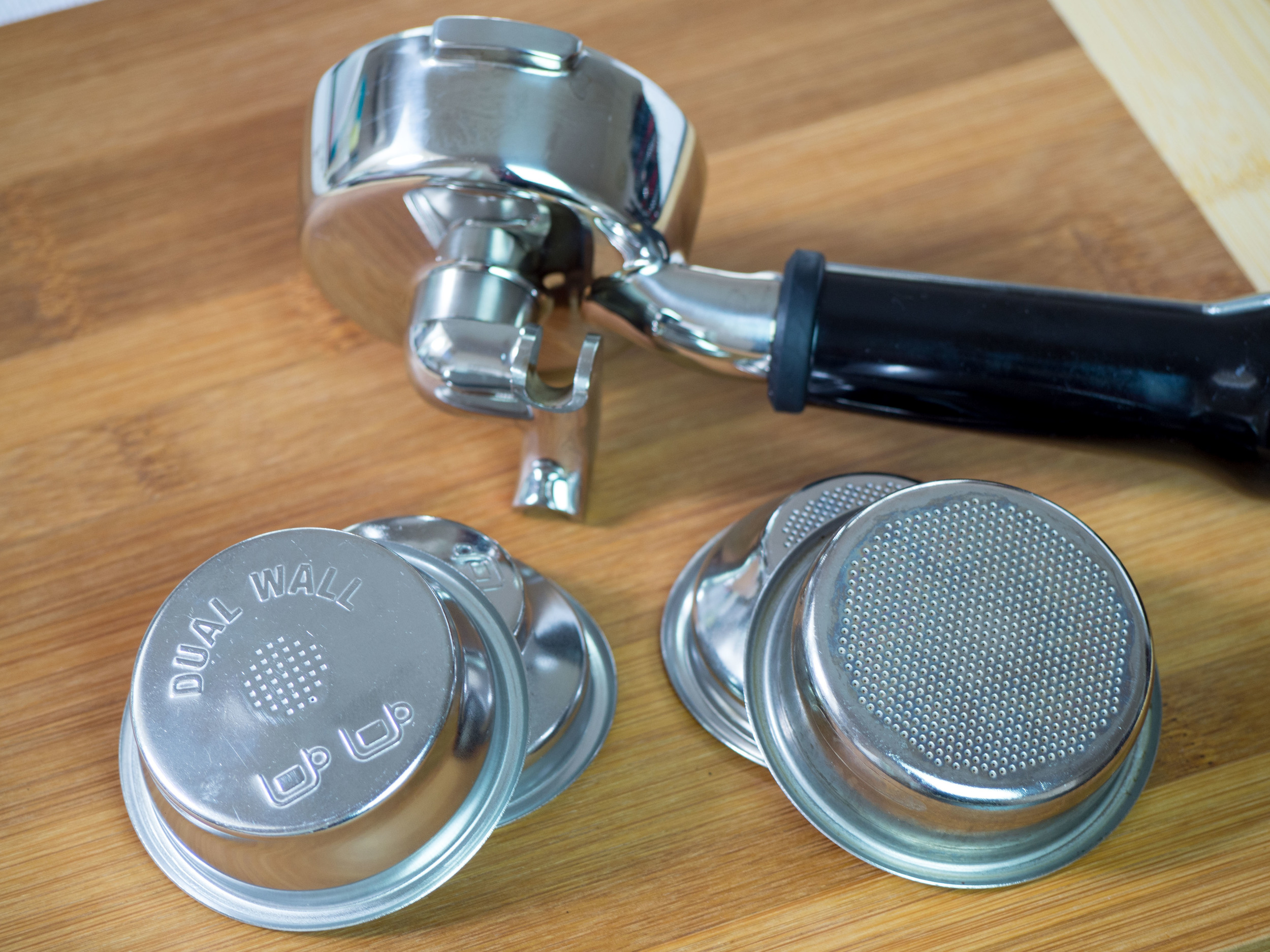When I began using my Breville (or Sage) espresso machine, I quickly realized that crafting the perfect single shot wasn’t as simple as halving the coffee dose for a double shot. My machine included two filter baskets: one for single shots and another for doubles. While double shots were relatively easy to perfect, achieving an ideal single shot required more careful experimentation and adjustments. Get a detailed look at the precision and features in our Breville Dual Boiler BES920XL review
Key Differences Between Single and Double Baskets
One of the first things I noticed was the significant difference in design between single and double baskets. The single basket has a tapered, conical shape, while the double basket features a flat base. This subtle distinction greatly impacts the flow of water through the coffee grounds. Learn about the sleek design and functionality in our Breville Barista Touch Impress review
The conical design of the single basket often results in uneven extraction, as water tends to flow more freely through the center. This can lead to channeling, where some parts of the coffee are under-extracted, while others are over-extracted.
As a result, my initial single shots lacked the depth and balance of flavor that double shots consistently delivered. The double basket produced a richer, fuller taste with minimal effort. Compare performance and usability in our Breville Barista Express Impress vs Pro review
Techniques for Improving Single Shots
Determined to master the single basket, I tested various techniques and discovered adjustments that made a noticeable difference. Discover the key differences between these two models in our Breville Barista Pro vs Express review
Increase the Coffee Dose
Initially, I assumed halving the double shot dose—approximately 18 grams—would work for a single. However, this resulted in weak, watery shots that brewed too quickly.
By increasing the coffee dose to about 10 grams, I achieved better extraction times and more robust flavors. This small tweak added depth and complexity, producing far more satisfying single shots.
Adjust the Grind Size
The grind size also proved crucial. Early on, my shots brewed too quickly, indicating that my grind was too coarse. By adjusting to a finer grind, I achieved better extraction times and a more balanced flavor profile. Explore the advanced capabilities in our Breville Oracle vs Oracle Touch review
Finer grinds slow the water flow, ensuring a more even extraction. This adjustment significantly enhanced the richness and complexity of the espresso.
Precision became my priority, so I started using a scale for consistency. I followed a 1:2 brew ratio, aiming to extract twice the weight of the coffee dose in liquid espresso. For instance, with 10 grams of coffee, my target was 20 grams of espresso.
This method helped me achieve a well-balanced and concentrated espresso that avoided being overly weak or diluted.
Purge the Grinder Between Baskets
Switching between single and double baskets required extra attention to the grinder. After adjusting the grind size for a single shot, I made sure to purge any leftover grounds to maintain consistency.
This step proved essential, as leftover grounds could affect grind size and flavor. Being diligent about purging ensured more consistent results with every shot.

Overcoming Challenges and Embracing Success
Using the single basket came with its fair share of challenges, but refining my technique turned out to be incredibly rewarding. It demanded more precision and care, yet the result was a clean, focused shot that paired beautifully with milk-based drinks like lattes or cappuccinos.
For those who prefer a lighter, more nuanced espresso or enjoy a single shot in milk drinks, these adjustments are worth exploring. Every machine and palate is unique, so don’t hesitate to experiment with grind sizes, doses, and extraction times to find the perfect balance for your taste.
Conclusion
Mastering the single basket on a Breville or Sage espresso machine can be a bit challenging due to its conical design and the precision required. However, with patience and experimentation, you can craft beautifully balanced single shots.
Refining my single basket technique not only improved my espresso-making skills but also deepened my appreciation for the art of brewing. I encourage you to enjoy the process and discover the joy of pulling flawless single shots tailored to your taste
